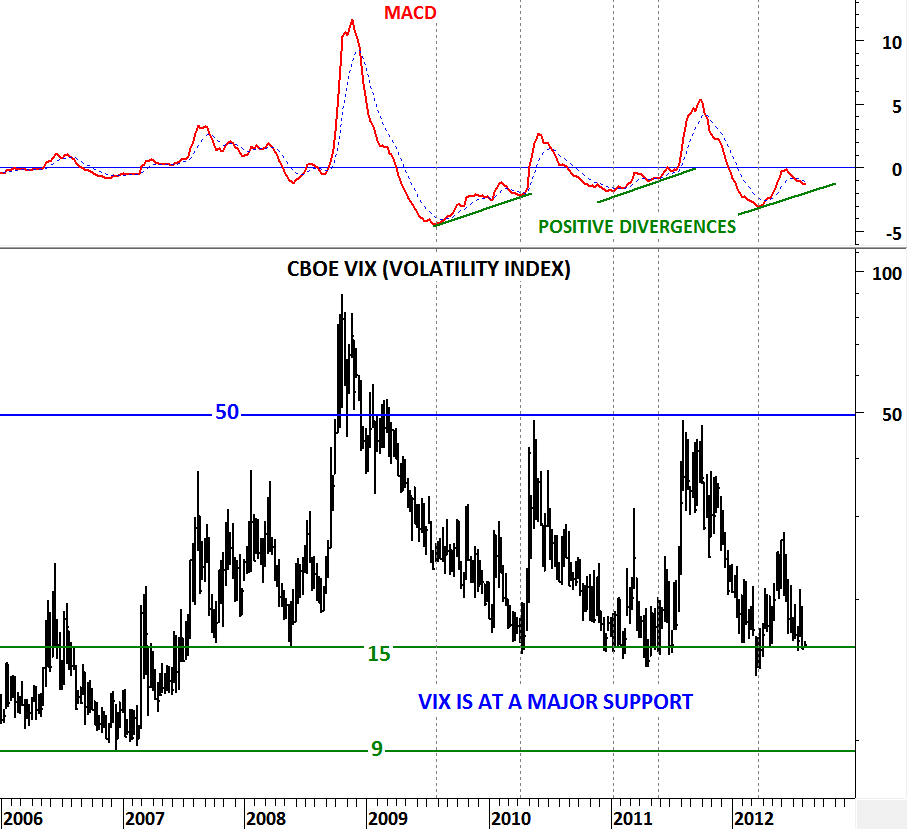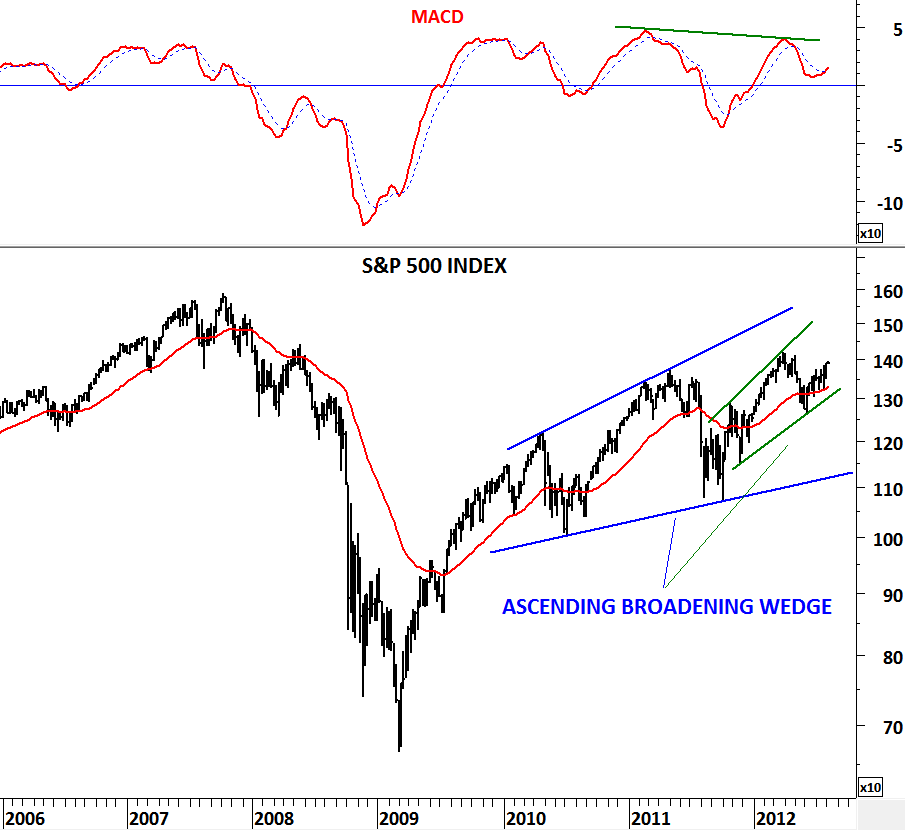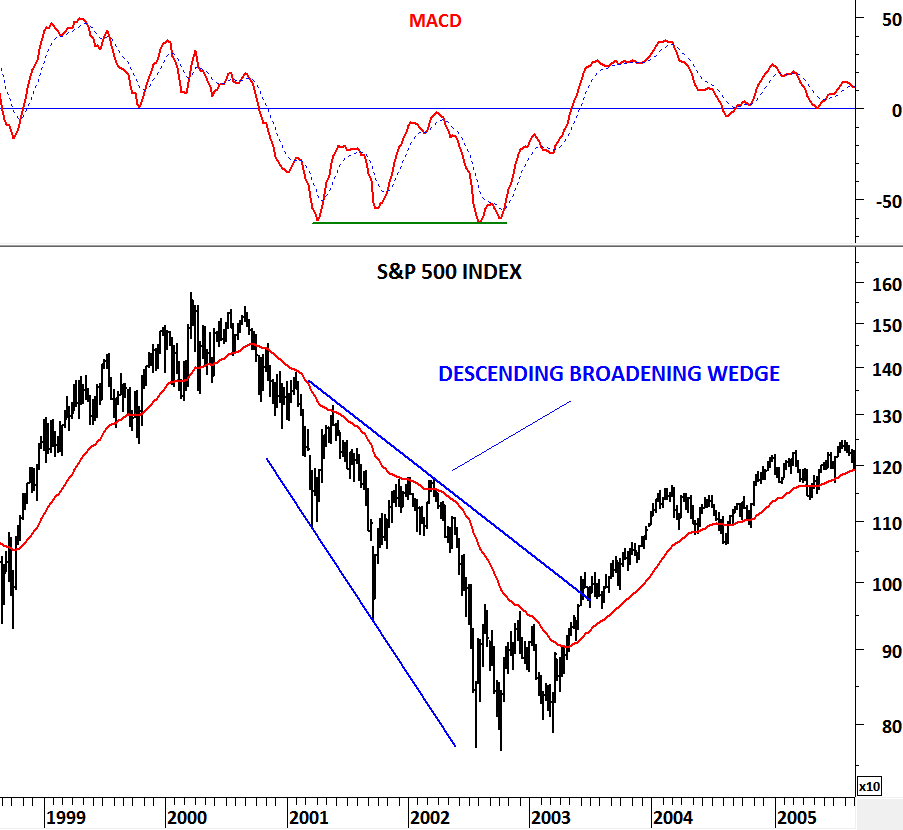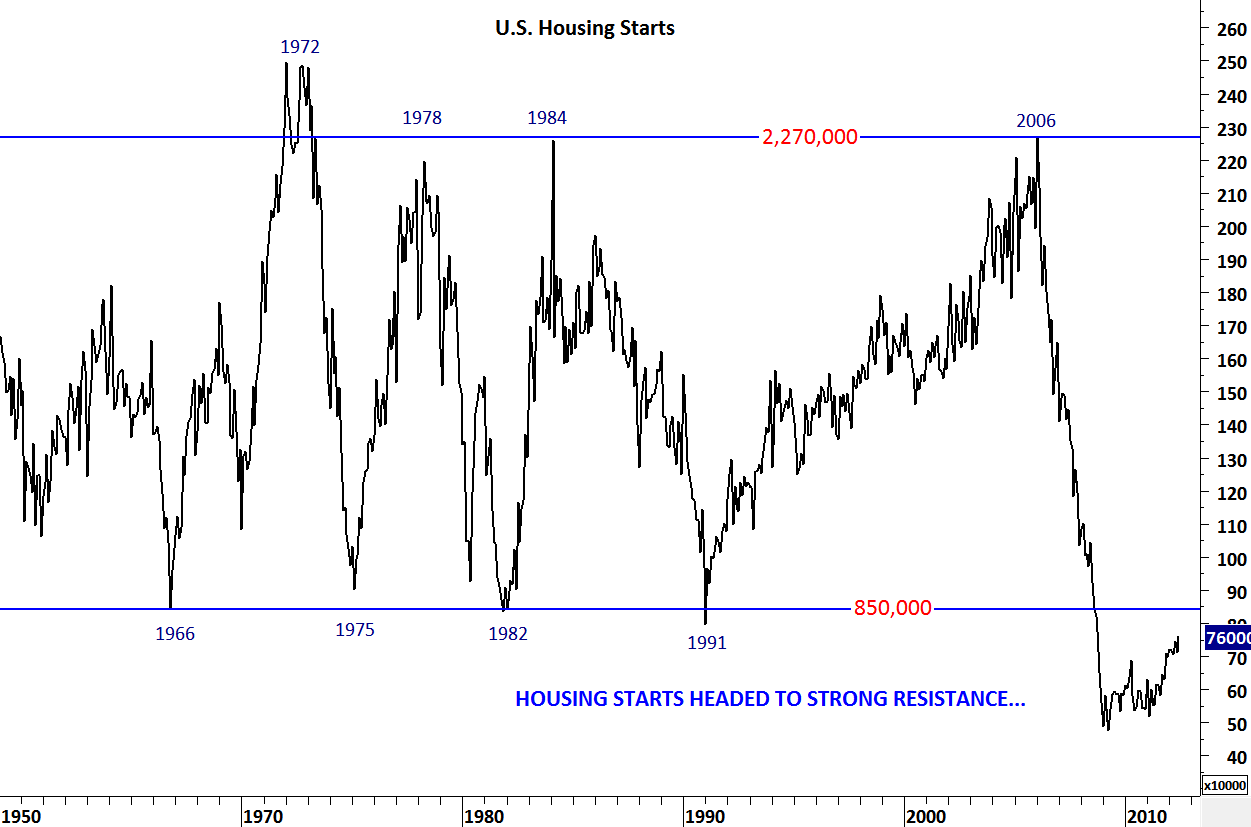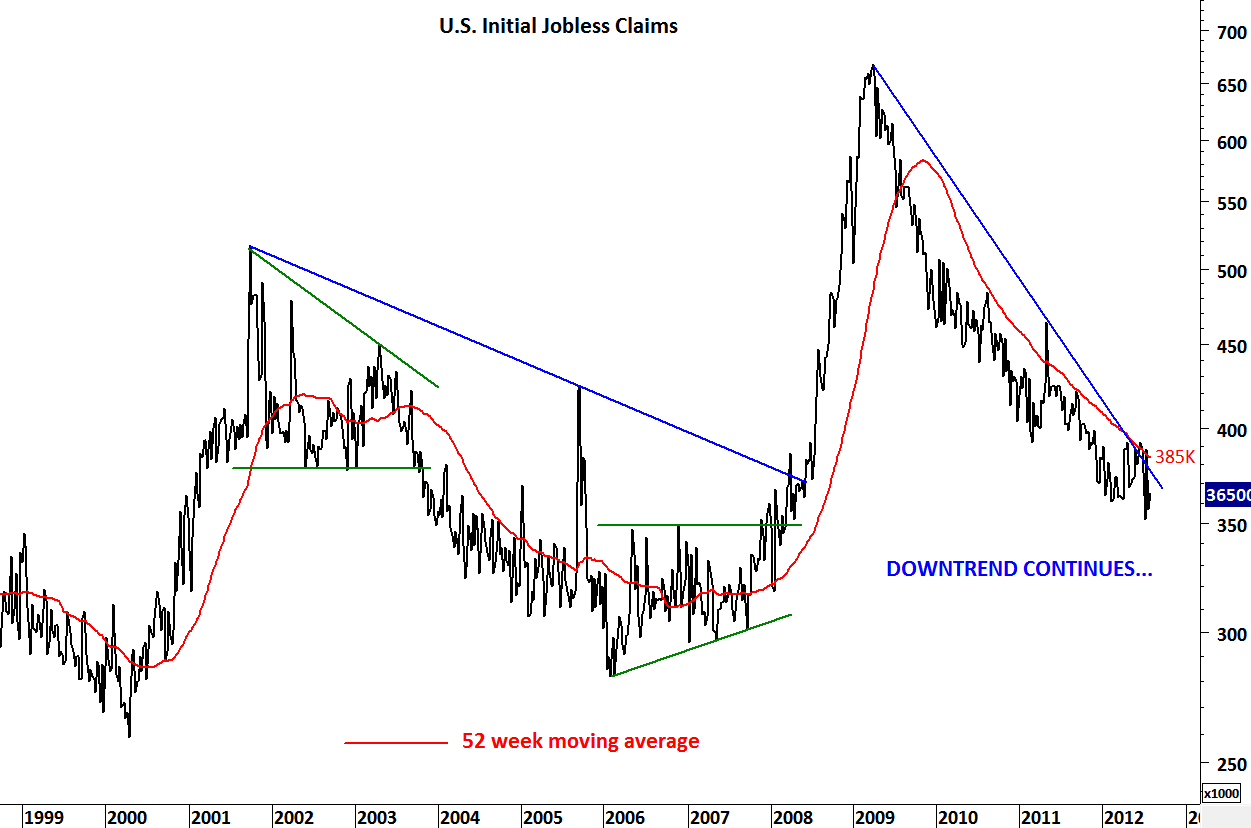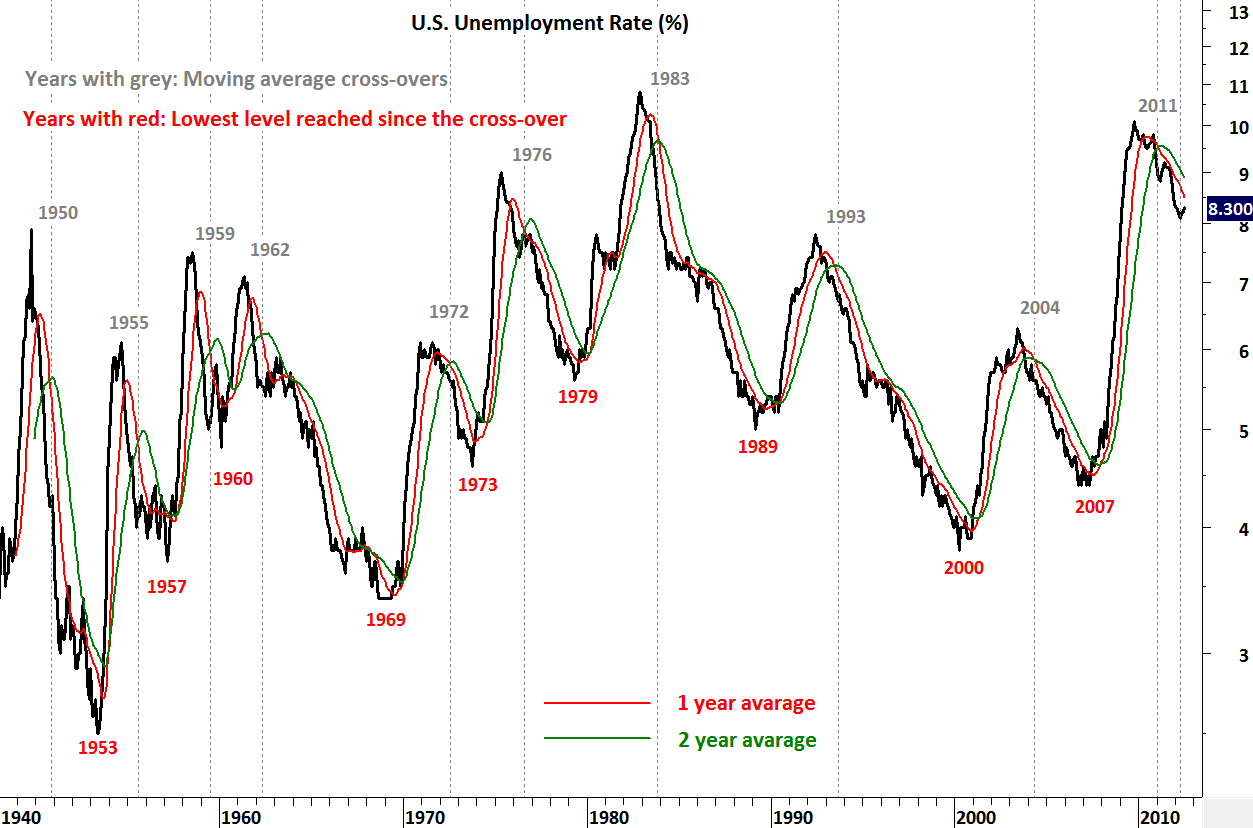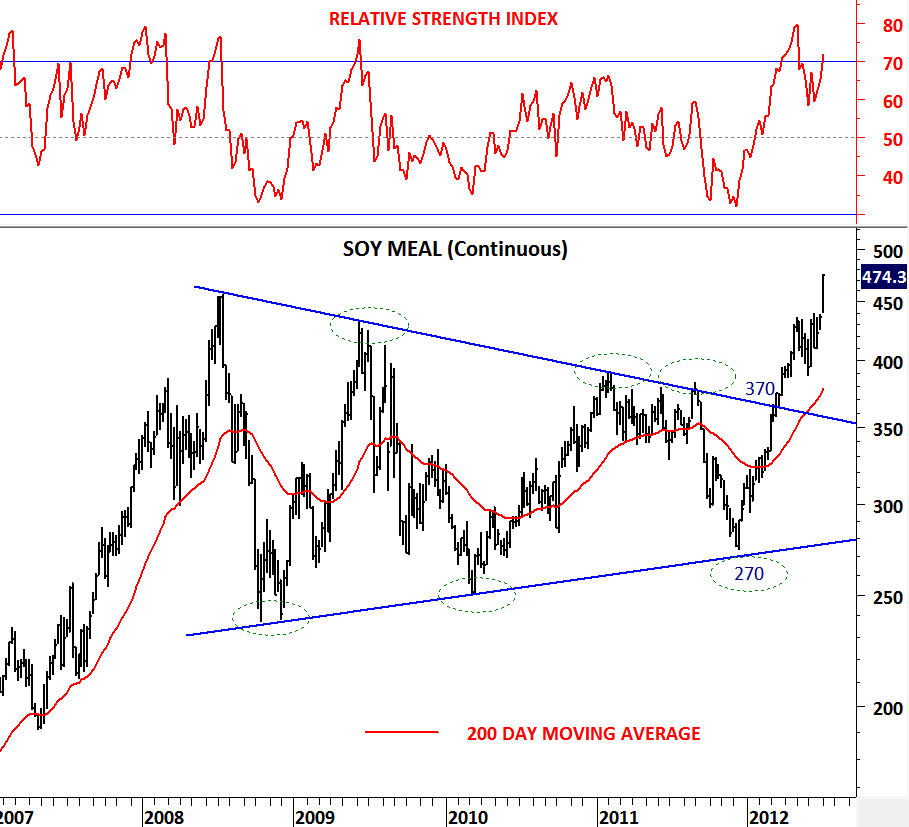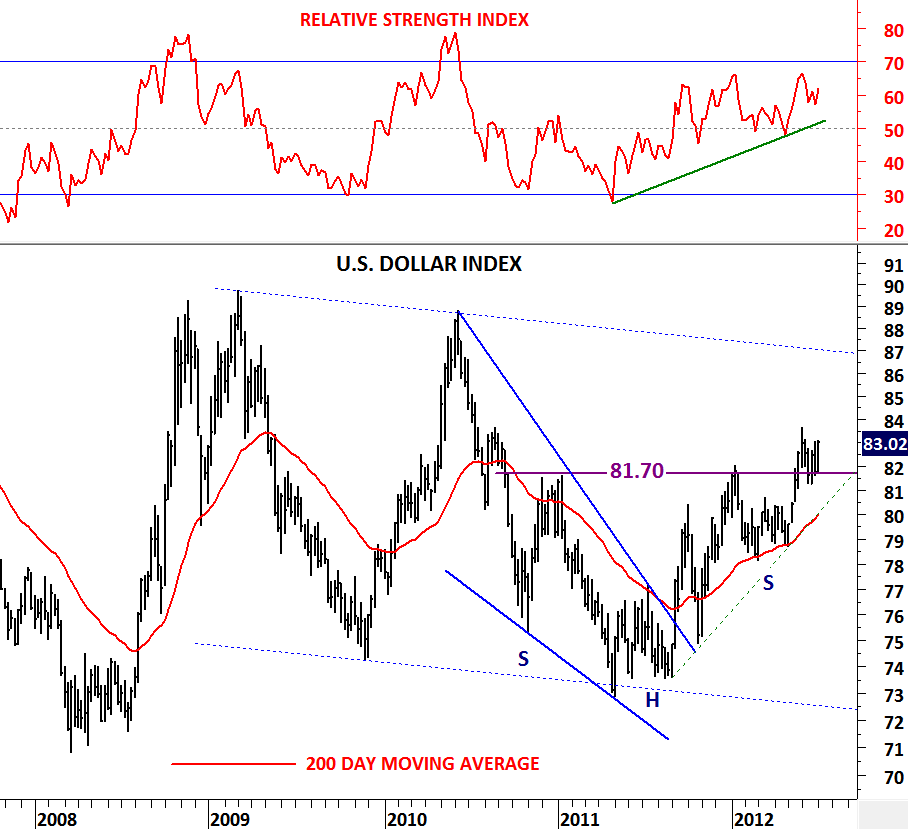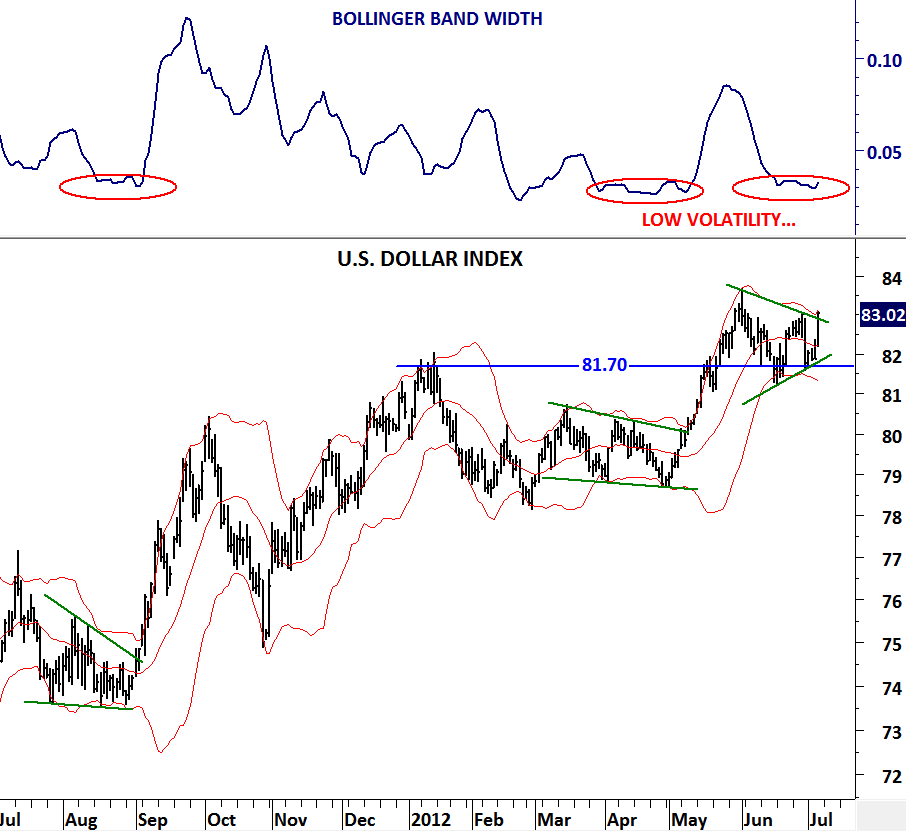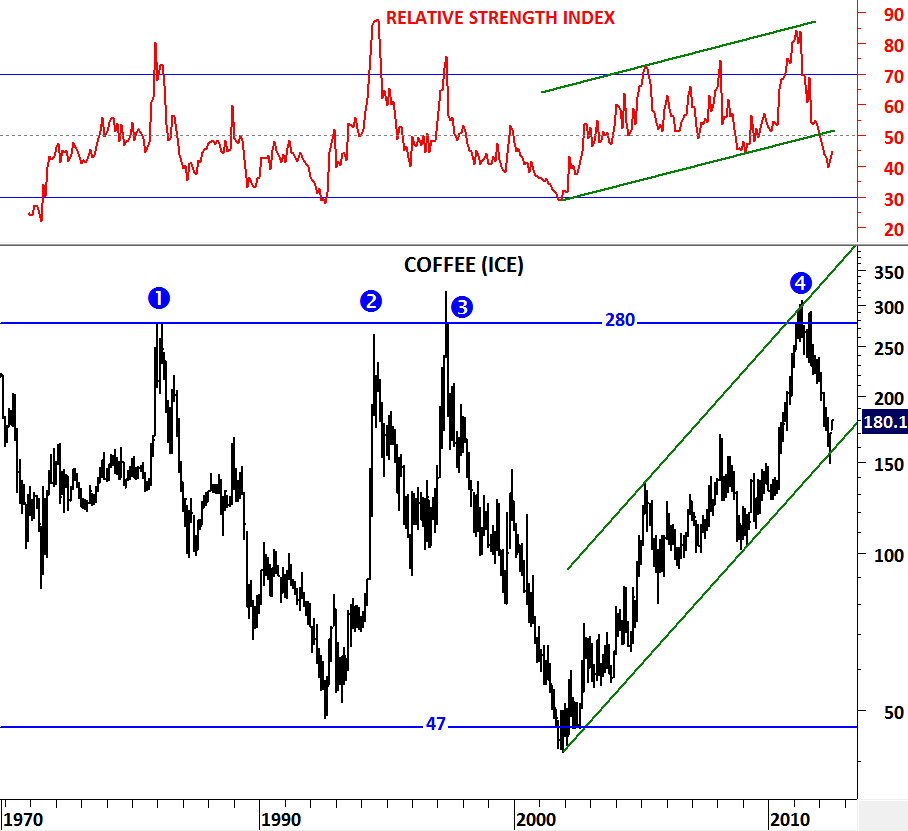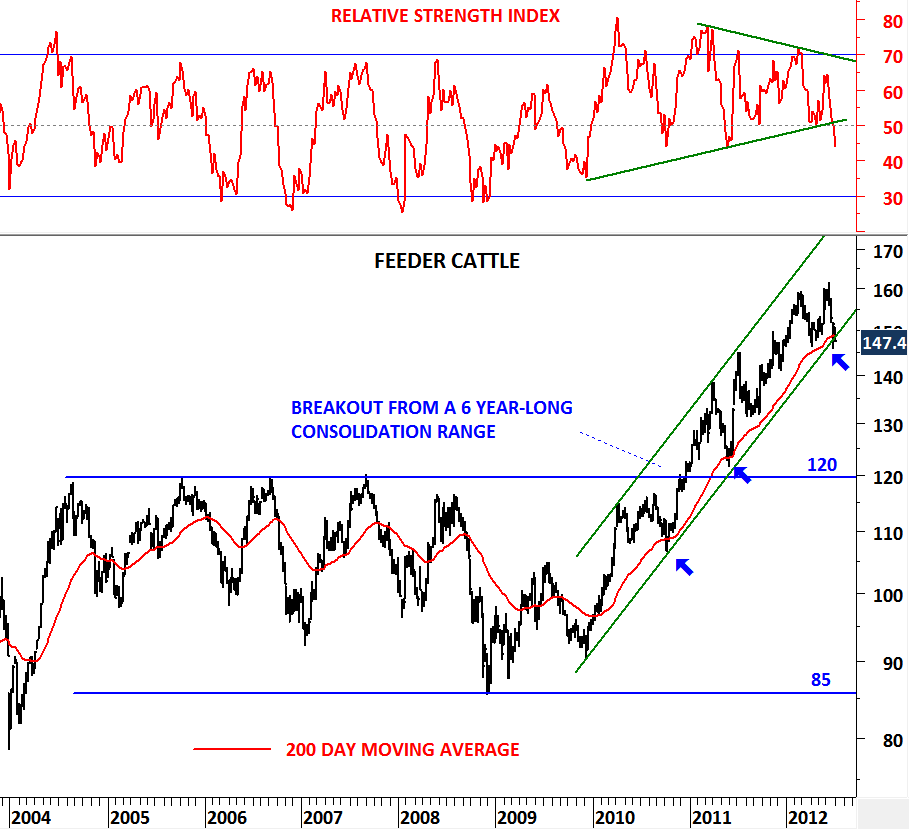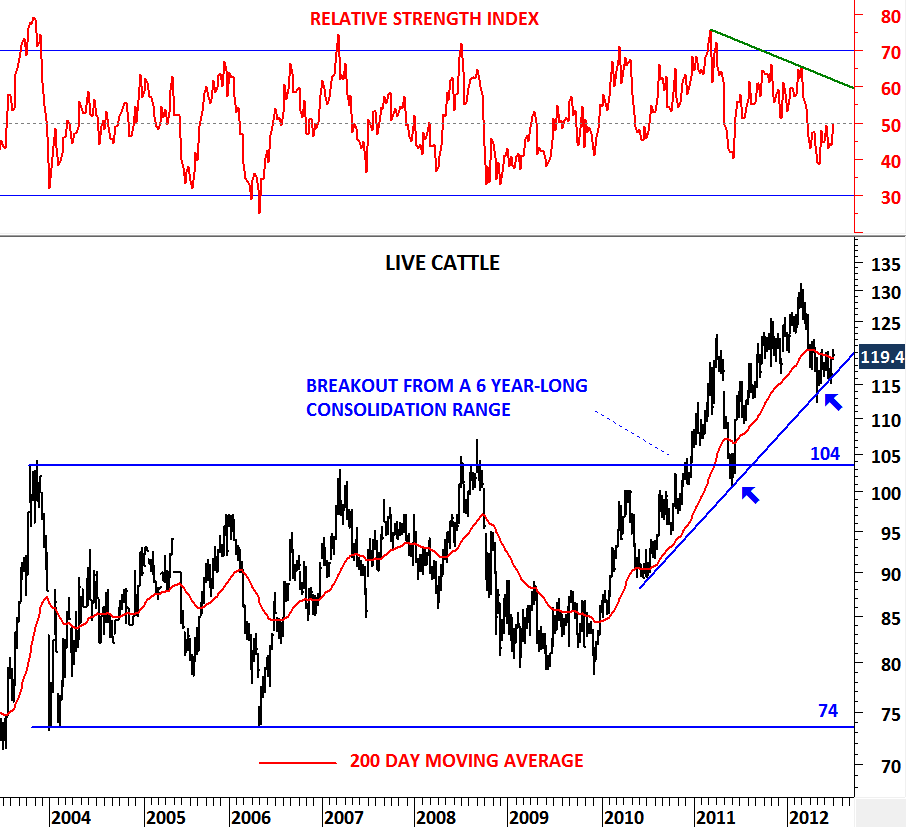U.S. HOUSING STARTS and JOBLESS CLAIMS
Yesterday’s data on housing and unemployment supported my view on weakening trends on both economic indicators. It is important to note that we are getting closer to a major long-term resistance on the housing starts data. Since 1966, 850,000 level has been a major support. During the latest downturn, hosing starts fell below this level. Since the beginning of 2009, housing starts has been moving higher, though with a slow pace. As we get closer to the long-term resistance we are likely to see weaker housing data. Until we see housing starts above 850,000 levels, it will be early to call for a recovery on that front.
Unemployment number has been stubborn when compared with the aftermath of the previous recessions. Since the last quarter of 2009, jobless claims moved lower but now it looks like the downtrend is losing momentum. Incase of a rebound on jobless claims 385,000 level will be an important threshold as it is the last one year’s average. 52 week moving average has stopped the previous rebounds. I think it should be respected.
Followers might have realized the change in format on Tech Charts. I started posting the charts in PDF files and attaching the links below each post. There are two reasons for this: 1) Pictures were not as clear as before and I like my charts to be clear, texts easy to read and both time and price scales visible. 2) I can add more text on the charts in PDF format.
Please send me your feedback regarding the new format.
US HOUSING STARTS & JOBLESS CLAIMS (PDF Document)



